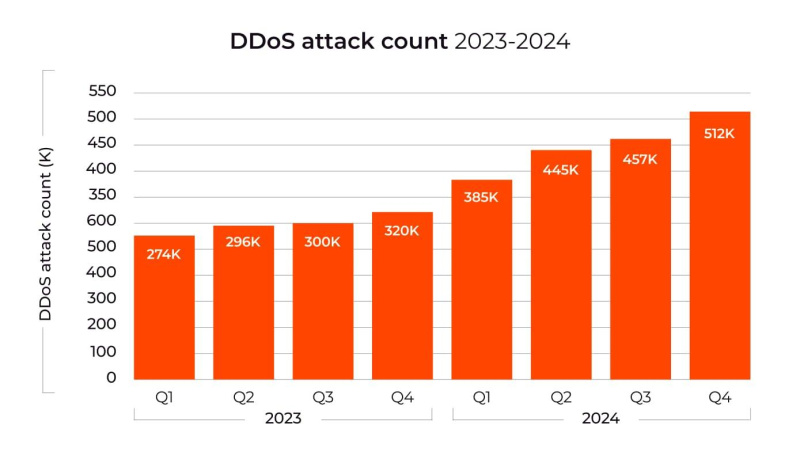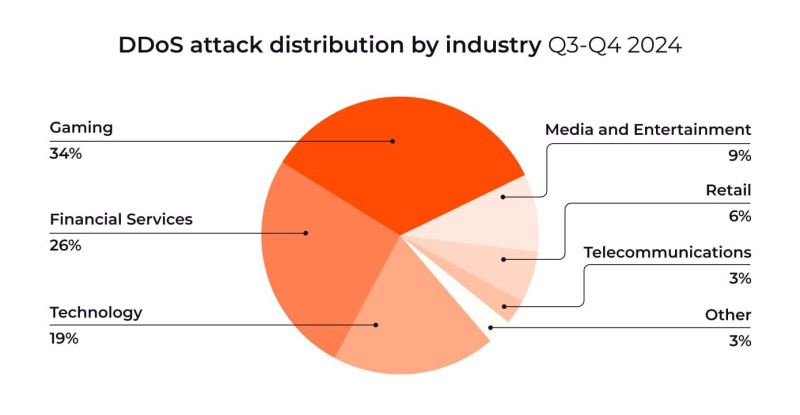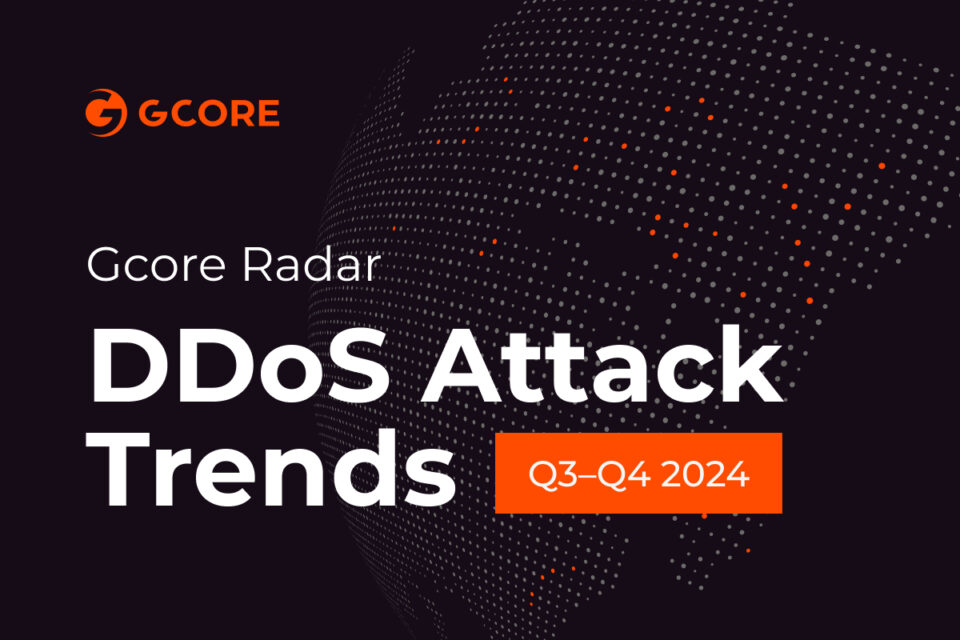Luxembourg, Luxembourg, February 11, 2025, CyberNewswire
GCORE, a global edge AI, cloud, networking and security solutions provider, today released the findings of the Q3-Q4 2024 Radar Report on DDOS attack trends. The DDOS attack reached unprecedented scale and disruption in 2024, and businesses must act quickly to protect themselves from this evolving threat. This report reveals significant escalations in the total number of DDOS attacks and their magnitude and magnitude measured in terabits per second (TBPS).
Q3-Q4 2024 Key Highlights
●Q3 – Q4 Compared to 2023, the number of DDOS attacks has increased by 56%, highlighting a sharp, long-term growth trend.
●The gaming industry continues to target DDOS attacks, accounting for 34% of all attacks.
●Q3-Q4 In 2024, the financial services sector increased significantly, accounting for 26% of all DDOS attacks, up from 12% in the previous period.
●Q1-Q2 Compared to 2024, the total number of attacks has increased by 17%.
●The biggest attack peaked at 2Tbps in the 2024 Q3-Q4. This is an 18% increase since Q1-Q2 2024.
● DDOS attacks have a shorter period, but are even more powerful.

Attackers are shifting focus
The sectors covered in Q3-Q4 2024 reflect a shift in the focus of DDOS attackers. In the technology industry, the share of DDOS attacks has steadily increased, increasing from 7% to 19% since Q3-Q4 2023. This is because DDOS attackers recognize the widespread destruction of technology services attacks. A single, successful attack can take away the services that countless organizations depend on, causing great harm to people and businesses. Another reason technology platforms have seen an increase in DDOS attacks is due to the enormous math power that malicious actors can use to bolster their attacks.
The gaming industry continues to be the most attacked industry, but while attacks were 31% less than Q1-Q2 2024, the decline in attacks could be attributed to several factors. For example, gaming companies are strengthening their DDOS defenses in response to ongoing attacks, which can result in successful attacks. Another explanation is that attackers may be shifting their focus to other high-value sectors, such as financial services, where the number of attacks has increased by 117%. The sector’s key online services and sensitivity to ransom-based attacks make it a major target.
Andrey Slastenov, GCORE security officer, commented: Not only does the number and intensity of attacks increase, but attackers are also expanding the scope of their attacks, reaching an increasingly wider range of sectors. Companies should invest in robust DDOS detection, mitigation, and protection to prevent the financial and reputational impact of attacks.

Geographical distribution of DDOS attacks
The existence spanning six continents allows GCORE to accurately track the geographical sources of DDOS attacks. GCORE derives these insights from the attacker’s IP address and the geographic location of the data center where malicious traffic is targeted.
GCORE’s findings highlight the Netherlands as an important source of attack. At 21%, the second application layer attack ranks second with 18%. The US was highly ranked on both layers, reflecting the vast internet infrastructure for hackers to exploit.
Brazil was featured prominently with 14% network layer attacks. Brazil’s growing digital economy and connectivity make it a new source of attack. China and Indonesia are also prominent, with Indonesia showing an increase in application layer attacks of 8%, reflecting a broader trend in increased attack activity in Southeast Asia.
A short but powerful attack continues to take hold
DDOS attacks have a shorter period, but are not so destructive. Q3-Q4 The longest DDOS attack period for 2024 was 5 hours, which is a significant decrease from the 16 hours in the first half of the year. This reflects an increasing trend towards shorter but more intense attacks. These “burst attacks” can become more difficult to detect as they can blend in with normal traffic spikes. Delays in detection allow attackers to provide a window into the opportunity to disrupt services before cyber defense begins.
The trend towards shortening DDOS attack durations can be partly due to improved cybersecurity. As security increased, attackers learned to adapt with short burst attacks designed to bypass defenses. A short DDOS attack can also serve as a smoke screen to hide secondary attacks such as ransomware deployment.
The full report is available at https://gcore.com/library/gcore-radar-dos-attack-trends-q3-q4-2024
About Gcore
GCORE is a global edge AI, cloud, networking and security solutions provider. Headquartered in Luxembourg, GCORE offers solutions to many global leaders in the industry, with 600 teams running from 10 offices around the world. GCORE manages global IT infrastructure across six continents, one of the best network performance in Europe, Africa and Ratum, due to its average response time of 30 ms worldwide. GCORE’s network consists of 180 points worldwide in trusted Tier IV and Tier III data centers, with total network capacity exceeding 200 Tbps.
Users can find out more on gcore.com and follow them on LinkedIn, Twitter and Facebook.
contact
GCORE Press Contact Information
pr@gcore.com
Source link

